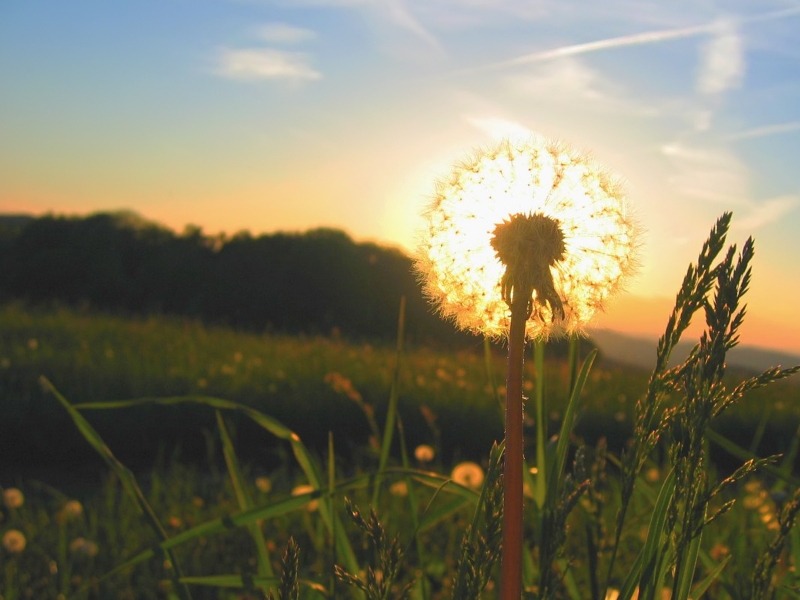Excerpt "On Dandelions" by John Burroughs

Among trees Lowell has celebrated the oak, the pine, the birch; and among flowers; the violet and the dandelion. The last, I think, is the most pleasing of these poems:--
"Dear common flower, that grow'st beside the way,
Fringing the dusty road with harmless gold,
First pledge of blithesome May."
The dandelion is indeed, in our latitude, the pledge of May. It comes when the grass is short, and the fresh turf sets off its "ring of gold" with admirable effect; hence we know the poet is a month or more out of the season when, in "Al Fresco," he makes it bloom with the buttercup and the clover:--
"The dandelions and buttercups
Gild all the lawn; the drowsy bee
Stumbles among the clover-tops,
And summer sweetens all but me."
Of course the dandelion blooms occasionally throughout the whole summer, especially where the grass is kept short, but its proper season, when it "gilds all the lawn," is, in every part of the country, some weeks earlier than the tall buttercup and the clover. These bloom in June in New England and New York, and are contemporaries of the daisy. In the meadows and lawns, the dandelion drops its flower and holds aloft its sphere of down, touching the green surface as with a light frost, long before the clover and the buttercup have formed their buds. In "Al Fresco" our poet is literally in clover, he is reveling in the height of the season, the full tide of summer is sweeping around him, and he has riches enough without robbing May of her dandelions. Let him say,--
"The daisies and the buttercups
Gild all the lawn."
... A weed which one ruthlessly demolishes when he finds it hiding from the plow amid the strawberries, or under the currant-bushes and grapevines, is the dandelion; yet who would banish it from the meadows or the lawns, where it copies in gold upon the green expanse the stars of the midnight sky? After its first blooming comes its second and finer and more spiritual inflorescence, when its stalk, dropping its more earthly and carnal flower, shoots upward, and is presently crowned by a globe of the most delicate and aerial texture. It is like the poet's dream, which succeeds his rank and golden youth. This globe is a fleet of a hundred airy balloons, each one of which bears a seed which it is destined to drop far from the parent source.
Source: "The Writings of John Burroughs," by John Burroughs



